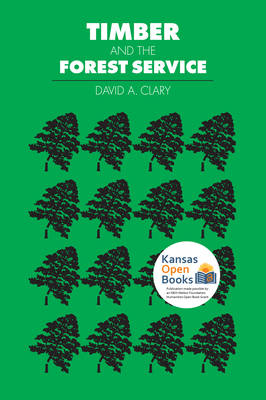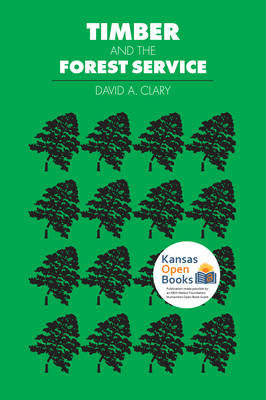
- Afhalen na 1 uur in een winkel met voorraad
- Gratis thuislevering in België vanaf € 30
- Ruim aanbod met 7 miljoen producten
- Afhalen na 1 uur in een winkel met voorraad
- Gratis thuislevering in België vanaf € 30
- Ruim aanbod met 7 miljoen producten
Zoeken
Omschrijving
Nearly onequarter of America is covered with forests--almost 800 million acres. There are 151 national forests, comprising close to 200 million acres in thirtynine states and Puerto Rico. These protected lands are administered by the U.S. Forest Service, an agency of the Department of Agriculture. David Clary here examines the history of and controversies surrounding the Forest Service's policies for timber management in our national forests. In this first indepth study of the political, bureaucratic, social, and ideological relationships between the Forest Service and the production of timber, Clary traces the continuity in the agency's outlook from its creation in 1905 through fears of a "timber famine" to the "clearcutting" controversies of the mid 1970s. He shows convincingly that, despite legislative remedies and agency reports, timber production has remained the agency's first priority and that other (multiple uses--recreation, watershed protection, wilderness, livestock grazing, and wildlife management--were regulated so that they would not interfere with potential timber harvests. Throughout its history, the agency is shown to have been enchanted with the objective of producing timber. Clary's theme, in what he describes as an "administrative, political, scientific, and anecdotal history," is that the Forest Service exhibited consistent actions and attitudes over the years and failed to confront realistically changes in the national culture that altered what the American people wanted from the forests and the Forest Service.
Specificaties
Betrokkenen
- Auteur(s):
- Uitgeverij:
Inhoud
- Aantal bladzijden:
- 272
- Taal:
- Engels
- Reeks:
Eigenschappen
- Productcode (EAN):
- 9780700603893
- Verschijningsdatum:
- 30/11/2021
- Uitvoering:
- Paperback
- Formaat:
- Trade paperback (VS)
- Afmetingen:
- 152 mm x 229 mm
- Gewicht:
- 362 g

Alleen bij Standaard Boekhandel
+ 84 punten op je klantenkaart van Standaard Boekhandel
Beoordelingen
We publiceren alleen reviews die voldoen aan de voorwaarden voor reviews. Bekijk onze voorwaarden voor reviews.











